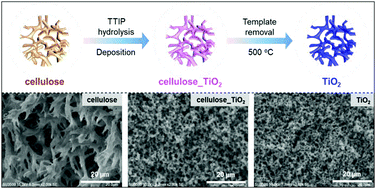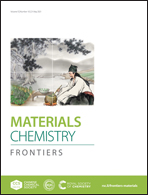Hierarchically porous TiO2 monolith prepared using a cellulose monolith as a template†
Abstract
The photocatalytic process using TiO2 materials under UV light illumination has shown great advantages in wastewater treatment. However, it is necessary to recover the catalyst from the suspension, and the small particle size of the catalyst can cause secondary pollution. Hierarchically porous TiO2 monolithic materials are potential candidates for water remediation, as they can be easily recovered and can be used in flow systems. In this study, we used an ecofriendly cellulose material as a template to prepare a hierarchically porous TiO2 monolith. The cellulose monolith template was prepared from cellulose acetate by a thermally induced phase separation method. A composite monolith was then prepared in the presence of the cellulose monolith by a typical sol–gel reaction of titanium isopropoxide (TTIP). This composite monolith was then converted to a TiO2 monolith by burning it in air to remove the cellulose monolith. Owing to the hierarchically porous structure of the cellulose monolith template, the obtained TiO2 monolith showed a similar hierarchically porous structure, as confirmed by scanning electron microscopy and nitrogen adsorption–desorption analyses. The pore structures could be controlled by changing the fabrication parameters, such as the type of cellulose monolith and TTIP content. The photocatalytic performance of the TiO2 monolith was evaluated by studying its effect on the degradation of methylene blue (MB) in a flow system.



 Please wait while we load your content...
Please wait while we load your content...